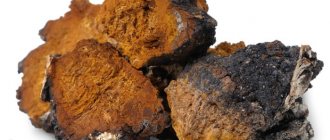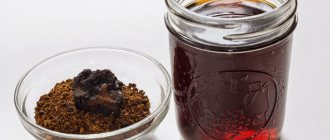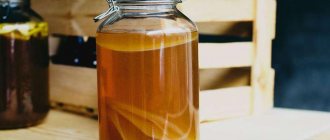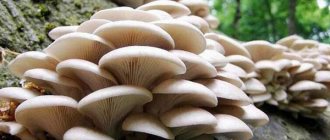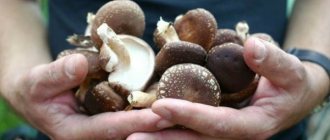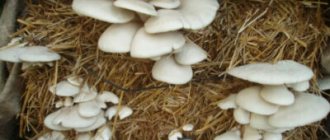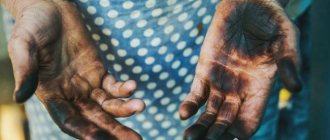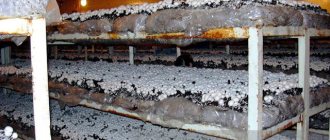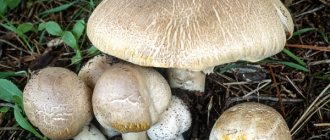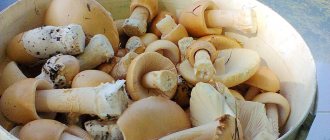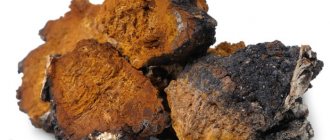Do the lungs recover after COVID-19? Yes. But you need to not miss the rehabilitation period and take the doctor’s recommendations seriously.
The new coronavirus infection caused by SARS-CoV-2 has not been well studied, but it is clear that it causes harm to all human organs and tissues. The virus enters the body through the mucous membranes of the nose, eyes, and pharynx. The first symptoms appear on days 2-14. Usually this is a fever above 37.5 degrees Celsius, a runny nose, loss of smell, dry cough, loose stools, weakness and headache. On days 6–10 from the onset of the first symptoms, shortness of breath, chest pain, and increased cough may begin to bother you. These are alarming symptoms that indicate lung damage and require additional examination: computed tomography of the lungs, measurement of blood oxygen saturation (saturation).
Lungs after COVID-19
Entering the human body through the mucous membranes of the respiratory tract, SARS-CoV-2 causes a powerful inflammatory reaction. Immune cells are activated and a colossal amount of inflammatory substances (inflammatory cytokines) are produced. The intensity of this reaction is most likely determined genetically. It is the intensity of the inflammatory reaction that determines the severity of damage to the lung tissue according to research data. In the lung tissue, damage during COVID-19 is caused both by damage to the alveoli themselves (in which gas exchange occurs and the blood is saturated with oxygen from the air) by our own immune cells and by damage to the pulmonary vessels that encircle the alveoli. The extent of lung damage can be determined using CT (computed tomography).
Table 1. Lung damage due to COVID-19
| № | Percentage of lung tissue damage | Manifestations | Hospitalization |
| 1. | 15 | Part of the lung is affected. Slight difficulty breathing. | Not shown. |
| 2. | 25 | Half of one lung is affected. There is difficulty breathing, but the person copes with the situation. | Treatment at home is possible. |
| 3. | 50 | One lung is turned off from breathing. Shortness of breath is noticeable. Active treatment is required. | The decision about hospitalization is made by the doctor. |
| 4. | 75 | Only half of one lung breathes. Severe respiratory failure. | Shown. |
Lungs may lose elasticity after COVID-19. The affected areas of lung tissue are replaced by connective (scar) tissue, and fibrosis occurs. Due to fibrotic changes in the lungs, the gas exchange function of the lung tissue suffers. There is no longer any inflammation, but respiratory failure remains. If measures are not taken during the disease itself, pathological changes in the lungs can remain for life. The person will be disturbed by:
- shortness of breath, worsening with physical activity;
- frequent dizziness;
- dry cough;
- chest pain;
- increasing weakness;
- decreased performance.
Sometimes the weakness is so severe that the ability to self-care is lost. To avoid these serious complications, it is necessary to carry out restorative measures - rehabilitation.
Principles of pulmonary rehabilitation after COVID-19
Rehabilitation begins 20–25 days after the onset of the disease, sometimes while still in the hospital. As soon as the acute process is over, the body temperature has returned to normal, an examination is carried out. It is clarified whether there is dysfunction of the kidneys, heart, blood vessels, or other organs. The lung recovery program after COVID-19 is developed individually. Taken into account:
- the severity of the coronavirus infection;
- the nature of viral pneumonia, the degree of lung damage;
- floor;
- weight;
- age;
- associated diseases.
The duration of rehabilitation is from 2 weeks to a year. It can go continuously or in courses of 10–14 days with breaks of 5–7 days. With minimal changes, breathing exercises, physical therapy, inhalations, massage, and physiotherapy are prescribed. Regime and nutrition play an important role.
Healing properties and contraindications for the use of chaga
Chaga contains organic acids - acetic, formic, oxalic and several other types. Alkaloids, phytoncides, and tannins are present. A lot of minerals, vitamins, water-soluble pigments. The product is actively used in folk medicine for the prevention of cancer.
Other beneficial properties of chaga:
- reduces sugar levels;
- improves metabolic processes;
- normalizes sleep, helps fight central nervous system diseases;
- reduces sweating;
- treats women's diseases, normalizes the menstrual cycle;
- accelerates the flow of bile;
- reduces sweating, used for hypothyroidism;
- improves blood composition;
- increases immunity.
How do you dry chaga?
In the sunIn the oven
This is such a useful, magical chaga, we’ll look at how to collect and dry it below. The product has contraindications - dysentery, systematic constipation, individual intolerance, pregnancy. The dried product will be harmful to children under 12 years of age and nursing women.
It is recommended to dry medicinal chaga in natural conditions in air. It is important to protect from direct sunlight. It is allowed to dry in the oven or use an electric dryer.
General recommendations for lung rehabilitation after COVID-19
- Maintaining a daily routine, getting a full eight hours of sleep
- Moderate physical activity (10,000 steps per day - walks in the park, forest in dry and warm weather). On a cold, windy or rainy day, it is better to stay home. For a walk, dress according to the weather; shoes should be comfortable.
- Breathing exercises
- Daily wet cleaning and ventilation of the room.
- Refusal to visit the bathhouse or sauna. You should not take hot baths.
- Prohibition on drinking alcohol and smoking.
Chaga tea
To brew chaga tea, only wild chaga is suitable. The finer the powder into which it is ground, the more active ingredients the chaga will release into the tea. Chaga tea is usually boiled, but this is not necessary. You can cook it at temperatures below 100 °C, without bringing it to a boil, but simply increasing the heating time. The longer the cooking time, the more “interesting” things appear in the broth, giving it an attractive taste. For example, after a few hours the decoction will contain not only melanin and polysaccharides, but also vanilla acid contained in the chaga, which will give the tea a syrupy taste with notes of vanilla.
Stainless steel or glass teapots are best for brewing. The kettle is filled with clean cold water, to which you add ground chaga and, if desired, other mushrooms and/or herbs. Before turning on the kettle or putting it on the fire, give the water a few minutes to soak the mushroom and herb powder (alternatively, if you are adding herbs, it is best to pre-soak them before steeping them in room temperature water for 5-30 minutes). If you only have chaga in the kettle, you can safely boil it for about 20 minutes (but you can also use a water bath at low boil for up to an hour, it will be tastier). If it is a mixture of chaga with herbs, the correct method would be to slowly (over half an hour to an hour) raise the temperature to 70-80 °C. This will allow the active substances of herbs to be extracted most completely and carefully. Strain the finished drink through a strainer. To taste, you can add nut milk, coconut milk, cream, honey, and spices. Brewed tea in a container with a lid is stored in the refrigerator for up to a week.
An interesting and very simple way to maximize the extraction of active substances from chaga is to freeze chaga tea . After cooling, the finished decoction should be placed in the freezer along with pieces of chaga . When frozen, those chaga cells that remain intact after crushing and boiling burst. Once removed from the freezer and reheated, they will become a decoction.
Nutrition for lung recovery after COVID-19
It is recommended to eat nutritious meals 5-6 times a day, in small portions.
Table 2. Required nutritional components
| № | Component | Product examples |
| 1. | Easily digestible protein | Chicken, turkey, young beef, cottage cheese, eggs. |
| 2. | Healthy fats | Sea fish, nuts, vegetable oils. |
| 3. | Alimentary fiber | Cereals, fresh vegetables and fruits. |
| 4. | Slow carbohydrates | Cereals, vegetables. |
| 5. | Probiotics | Fermented milk drinks, sauerkraut. |
| 6. | Iron | Parsley, beef liver, buckwheat. |
You need to drink 1.5–2 liters of water per day. Regular drinking water, fruit drinks, unsweetened compotes, and rosehip decoction are suitable.
Prohibited: “fast” carbohydrates - cakes, sweets, buns, fatty, hot, spicy foods, deli meats.
Storage containers
Containers for storing dried product must be clean and dry. Fresh mushrooms are easily affected by mold, so they must be dried.
In order for chaga to retain its properties, you need to use the following containers:
- glass jars with mesh lids;
- paper bags;
- linen bags;
- carton boxes.
Chaga pieces can be ground into powder. It is not recommended to store the product in metal containers, as this reduces its benefits. The containers themselves should be located in a room that is well ventilated.
The product should not be prepared in large quantities, since the healing properties are retained only for 4 months. Herbalists do not recommend using plastic containers. The wrong choice of cookware reduces the shelf life of raw materials.
Advice! After drying, the mushroom becomes very hard, so it must be cut or crushed immediately.
Breathing exercises for lung recovery after COVID-19
Breathing exercises stimulate blood circulation, train the respiratory muscles, increase the elasticity of the lung tissue, and improve bronchial drainage. You need to perform gymnastics in a clean, ventilated room. Start with 30 seconds, gradually increase to a quarter of an hour. Overwork should be avoided. If you feel dizzy, take a break.
Preparatory exercises
- While lying on your back, inhale slowly for 3–4 seconds, then exhale the same slowly for 5–6 seconds.
- Diaphragmatic breathing, when the stomach “inflates” as you inhale.
- Slowly inhale air, slowly exhale through a straw into a glass of water, and relax. Repeat 2-3 times, gradually increase to 10 times.
Initial exercises
- Sit on a chair, press your back against the back of the chair, lower your arms down. As you inhale, gently raise your arms forward and then up. As you exhale, return to the starting position.
- The same exercise, only raise your arms up to the sides.
- Stand up, put your fingers on your shoulders. As you inhale, slowly spread your arms to the sides. Exhaling through your mouth, return to the starting position.
Basic exercises
Gymnastics by A. N. Strelnikova has proven itself well. It is difficult to master it on your own. It is necessary that the movements be shown by a person who knows the technique. Instead of this breathing exercise, your doctor may recommend another one.
Myth four. The adenoma resolves.
Bipolar transurethral resection of the prostate
- Cost: 125,000 - 165,000 rubles.
- Duration: 40 – 90 minutes
- Hospitalization: 3-4 days in hospital
More details
Alas. To date, there is not a single drug that can completely cure this benign tumor. But there are medications (including herbal ones) that reduce spasm and swelling of the prostate gland, and therefore the unpleasant symptoms of the disease. Sometimes - for quite a long time. In some cases, non-surgical treatment methods such as microwave hyperthermia come to the rescue, during which the prostate gland is heated to 70 degrees, due to which the overgrown glandular cells of the prostate are reduced. But such a procedure is not indicated for everyone and is effective only in the initial stages of the disease.
Arterial embolization for prostate adenoma
- Cost: 100,000 - 180,000 rubles.
- Duration: 30-60 minutes
- Hospitalization: 2-3 days in hospital
More details
So no matter how you look at it, in the end you can’t do without surgery. Especially when it comes to a pronounced degree of the disease. There is no time for thinking here - we must act! Today in our country there are two methods of surgical treatment of prostate adenoma - adenomectomy (transvesical, retropubic) and transurethral resection of the prostate. The first, open surgery performed through the bladder, is more traumatic and is indicated for advanced forms of the disease. The second, endoscopic, which involves removing the adenoma with a special instrument through the urethra, has much fewer side effects and is much easier to tolerate. At the same time, the indications for this operation, which is considered the gold standard for surgical treatment of adenoma, are constantly expanding. On the third or fourth day after it, the patient is discharged home, after which, for a month, he leads a gentle lifestyle - with limited sexual activity, physical activity, and also following a special diet that excludes hot, salty, spicy foods, alcohol and highly carbonated drinks.
Exercise to treat lungs after COVID-19
Exercise therapy strengthens muscles weakened by disease, stimulates blood circulation, and normalizes the nervous system. Gymnastics are performed after breathing training, at a slow pace. You need to place a chair nearby and hold the back of it with your hand to control your balance. The first part of each exercise is performed while inhaling, the second – while exhaling.
Sample list of exercises
- Rise on your toes, stand on your full foot.
- Bend your leg at the knee, lifting it up and lowering it. Then - the second leg.
- Take your leg back and return it to its place. Same with the second leg.
- Circular movements of the shoulders forward, then back.
- Take your right hand back, return to the starting position, then your left.
- Place your hands on your belt. Turn your torso to the right, then to the left.
- Lean forward 20–30 degrees, straighten up.
- Bend to the right, straighten up, then to the left.
Physiotherapy after coronavirus
Table 3. Popular physiotherapeutic procedures
| № | Name | Action |
| 1. | SMT therapy | Sinusoidal modulated currents eliminate bronchospasms and improve drainage. |
| 2. | Laser therapy | Improves blood circulation, has a resolving and anti-inflammatory effect. |
| 3. | Polychromatic polarized light | Accelerates the resorption of infiltrate, improves bronchial patency. |
| 4. | Magnetotherapy | Eliminates inflammation, swelling, pain. |
| 5. | Ultrasound therapy | Removes phlegm, prevents the development of fibrosis. |
Fibrosis – as a consequence for the lungs after COVID-19
Signs of pulmonary fibrosis on CT (computed tomography) indicate that part of the lung tissue is replaced by scar tissue. Fibrosis does not develop in a few days. This usually takes up to 6 months. Fortunately, fatal pulmonary fibrosis leading to severe respiratory failure is not common, and for most people who survive coronavirus infection, the remaining changes in the lungs will not affect their health. In most cases, a control study shows a clear positive trend. Signs of fibrosis decrease or disappear. Normal lung tissue is restored.
Therefore, it is so important to consult a doctor in time and begin proper treatment for COVID-19, which will help avoid serious complications and reduce the recovery time after lung damage from SARS-CoV-2.
Once fibrosis has truly formed, it is irreversible. In this case, doctors try to create optimal conditions for the functioning of the remaining lung tissue. This can often be done, since the compensatory capabilities of the respiratory system are great. But simple methods are not enough for this. It is necessary to involve serious therapy, including medications and respiratory support.
Rules for collecting and preparing birch chaga mushroom
Chaga is often confused with tinder fungus. This growth is similar in appearance, differing only in its light color. The useful birch mushroom is always dark, bluish in color, and has an irregular shape. Outwardly it resembles a cow's hoof - it has a pronounced division into two, sometimes four parts. Weight can reach two kilograms.
The optimal time for collection is spring before the leaves appear on the birch tree, autumn after they fall. At this time, the product contains the maximum number of beneficial properties. The best place is birch groves. Traditional healers value extraction from single trees less; it is not customary to dry it.
Preparation instructions:
- Remove the loose part. It is convenient to chop with a kitchen hatchet; a large knife will do. It is not customary to dry soft areas;
- Cleaning it up. Sounds easy, but difficult to do. We recommend that you arm yourself with an ax and chop off the dark crust in a circle on all sides. It is important not to overdo it, otherwise there will be nothing to dry.
- Grind. It is recommended to dry pieces 4-5 cm in diameter. After dehydration, they will become smaller, the size is convenient to use. It is convenient to chop with an axe.
There is no need to rinse the chaga. We recommend chopping and slicing on a clean surface. Small parts, crumbs, illiquid pieces can be immediately filled with alcohol and used for decoction. Approximately identical specimens need to be dried.
Cut off the top of the chaga. Formations on the lower part of the trunk are less susceptible to drying, contain a lot of moisture, and absorb more dust and dirt. They are susceptible to damage by insects and wild animals.
Publications by doctors from the Family Doctor clinic on the topic “How to overcome post-Covid syndrome”
- Restoring the sense of smell after coronavirus
- Restoring memory after suffering from coronavirus
- Overcoming mental disorders during post-Covid syndrome
- Loss of smell due to COVID-19 - advice from an otolaryngologist
- Post-Covid screening - examination after a new coronavirus infection
- How to return digestion to normal after coronavirus?
- Recommendations from a cardiologist after suffering from COVID-19
- Coronavirus turned out to be “vindictive” - what is important to know
- We are experiencing COVID. How the coronavirus pandemic affects mental functioning
- Melatonin and COVID-19 - a cure for Trump
- Post-Covid syndrome: program for diagnosis and regression of post-Covid symptoms. How to Manage Long-Term Long COVID Symptoms
How to brew chaga in a thermos
Chaga tea can replace morning coffee, and tincture and decoction of birch mushroom help in the treatment of various diseases. As a medicine, chaga is brewed in a thermos on the recommendation of a doctor, who will also give advice on dosage and frequency of administration, if there are no contraindications.
Important! Only young tinder fungi have valuable properties. The decaying dry mushroom is not suitable for use, since it must collect substances from the bark of a living birch. A lifeless tree does not provide nutrition, so the tinder fungus is of no use.
